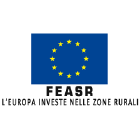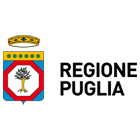W
W
Withdrawal
The recovery, in whole or in part, of the support granted, in any form (advance, advance, or balance), pursuant to Mipaaf Decree 25/01/2017 and the regional implementing provisions
Wood or forest
According to the provisions of art. 3 paragraph 1 of Legislative Decree 34/2018 “The terms wood, forest and grove are equal"; and again paragraph 3 of the same article: “Forest is defined as the area covered by forest vegetation, associated or not with shrubby vegetation, of natural or artificial origin at any stage of development and evolution, with an extension of not less than 2,000 square meters, an average width of not less than 20 meters and with forest tree cover greater than 20 percent". Pursuant to art. 4 of Legislative Decree 34/2018 . . . “without prejudice to the provisions of the landscape plans referred to in Articles 143 and 156 of Legislative Decree No 42 of 22 January 2004, the following shall be treated as woodland: a) the plant formations of tree or shrub species at any stage of development, association and development, including cork trees and those characteristic of the Mediterranean maquis, recognised by current regional legislation or identified by the regional landscape plan or in the context of specific cooperation agreements concluded, in accordance with Article 15 of Law No 261 of 7 August 1990, shall be treated as woodland: a) the plant formations of tree or shrub species at any stage of development, association and development, including cork trees and those characteristic of the Mediterranean maquis, recognised by current regional legislation or identified by the regional landscape plan or in the context of specific cooperation agreements concluded, in accordance with Article 15 of Law No 261 of 7 August 1990, shall be treated as woodland. 241, by the regions and the competent territorial bodies of the Ministry of Cultural Heritage and Activities and Tourism for the particular forest interest or for their specific functions and characteristics and which are not already classified as forest; b) the funds burdened by the obligation of reforestation for the purposes of hydrogeological protection of the territory, improvement of air quality, preservation of water resources, conservation of biodiversity, protection of the landscape and the environment in general; c) new forests created, directly or through monetisation, in compliance with the obligations of compensatory intervention referred to in Article 8, paragraphs 3 and 4; d) forest areas temporarily without tree and shrub cover due to human intervention, damage caused by biotic or abiotic adversities, accidental events, fires or due to transformations carried out in the absence of or inconsistent with the authorizations required by current legislation; e) clearings and all other areas of less than 2. (f) linear infrastructures of public utility and their respective areas of pertinence, even if wider than 20 metres, which interrupt the continuity of the forest, including forest roads, power lines, gas pipelines and aqueducts, located above and below ground, subject to periodic interventions to contain vegetation and routine and extraordinary maintenance aimed at ensuring the efficiency of the works themselves and which do not require further authorization. The definition of cork forest in Law 18/07/1956, n. 759, is subject to change. Funds burdened by the obligation of reforestation for the purposes of hydrogeological defense of the territory, air quality, are also assimilated to forest, conservation of water resources, conservation of biodiversity, protection of the landscape and the environment in general, as well as clearings and all other areas of less than 2000 square metres which interrupt the continuity of the forest and which are not identifiable as pastures, meadows or wooded pastures. Pursuant to art. 5 of Legislative Decree 34/2018 . . . “without prejudice to the provisions of the landscape plans referred to in Articles 143 and 156 of Legislative Decree 22 January 2004, no. (b) woodland trees, as referred to in Article 3(2)(n) , artificially-grown truffles, hazelnut and chestnut groves currently under cultivation or under restoration, as well as short rotation coppice as referred to in Article 4(1)(k) (c) urban green areas such as public and private gardens, roadside trees, nurseries, including those located in non-forestry areas, seed orchards not formed pursuant to Legislative Decree No 386 of 10 November 2003 and those located in non-forestry areas, crops for the production of Christmas trees, fruit-growing and other agricultural crops, hedges, rows and groups of trees; (d) areas subject to eradication measures and plans implementing Regulation (EU) No 1143/2014 of the European Parliament and of the Council of 22 October 2014. Artificial mixed forest: artificial stand started a process of renaturalization through the affirmation of natural renewal (source: “Selvicoltura generale" P. Piussi, UTET)



